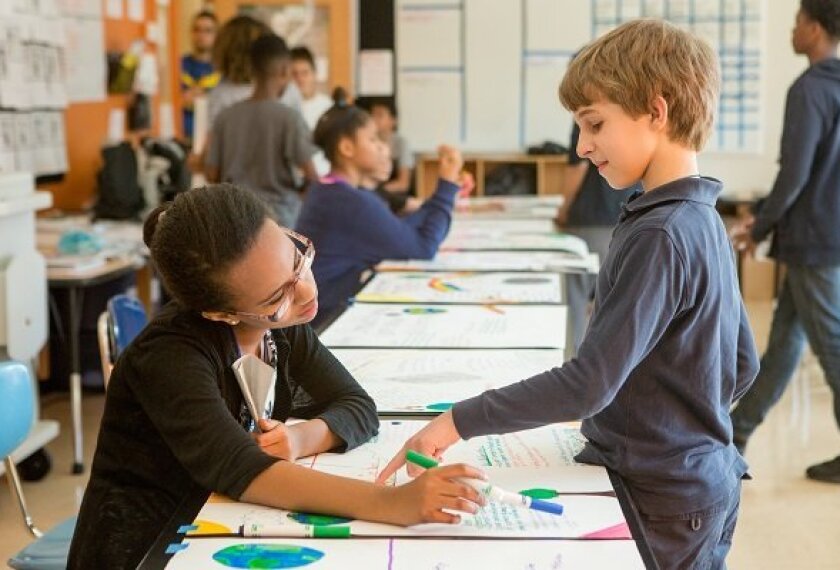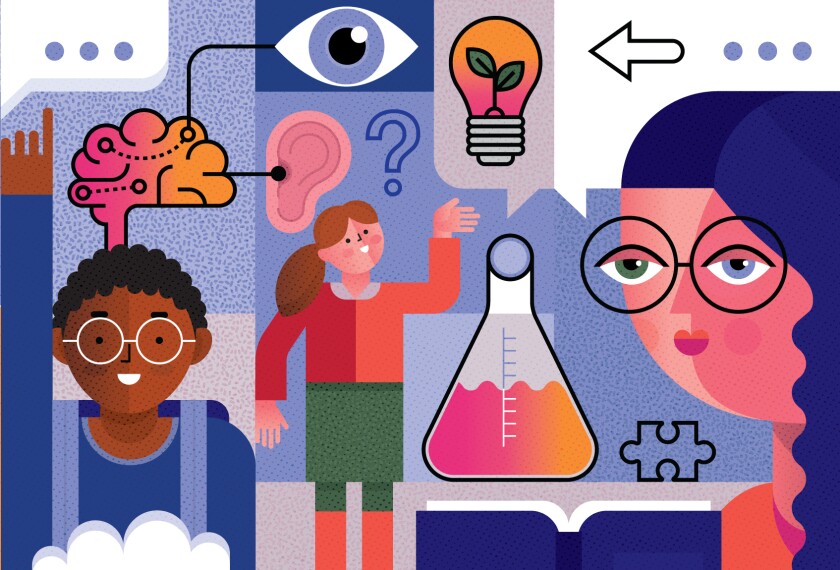If you want to engage students and get them excited about what they are learning in science, technology, engineering, and mathematics classes, ask them to tackle a real-world problem. Then watch their amazement as they realize what they are learning in class actually has real-world applications.
Working on solutions to real-world problems is the heart of any STEM investigation. These solutions may include devices and designs that improve our lives, fulfill our needs or wants, and make our world better. From designing a better pen to figuring out how to assist areas lacking access to clean drinking water, the opportunity to search for solutions to real-world problems fuels students’ curiosity and sparks their investigative interests.
Perhaps the most important consequence of students working on real problems is that they begin to develop empathy—a sense that there is something worth dedicating their efforts to outside of themselves. We need to grow a savvy, ethical workforce to solve looming issues such as air pollution, fresh-water shortages, and crumbling infrastructure.
Criteria for Selecting Real-World Problems
Designing real-world engineering challenges for K-12 students can be tough. In my experience as a STEM teacher, identifying authentic problems that students can work on is one of the most challenging parts of lesson planning.
Here are some of the criteria I consider when selecting real-world problems:
- The problem must be real. It must involve an authentic engineering challenge grounded in compelling societal, economic, and environmental issues that affect people’s lives and communities. Mythical insects, space aliens, and theoretical life forms are not real-world problems—at least not yet.
- Students must be able to relate to the problem. If students don’t care about the problem, their buy-in will be limited. This needs to be a significant challenge students care about. It might be a problem in their own life or community. Alternatively, you might build a context to help them connect with an unfamiliar problem by using videos, speakers, or field trips.
- The problem should be “doable.” For a STEM project to be successful, students should have access to the resources, knowledge, and skills they need to solve the problem—and the scope of the problem should be manageable. Engineering solutions for a problem involving clean energy, such as wind turbines or solar cells, might be realistic. However, tackling a problem involving interplanetary space travel—not so much.
- The problem must allow for multiple acceptable approaches and solutions. Don’t even consider a problem with a single, predetermined approach and “right” or “wrong” answer. In your STEM class, each team of students might choose a different approach for solving the problem, and several different solutions may work.

- Students should use an engineering design process—drawing on science, mathematics, and technology skills and concepts—to solve the problem. However, each subject doesn’t need to be used to the same extent. Some solutions may rely more heavily on science and others on mathematics, but all must require students to use an engineering design process.
- The problem should align with grade-level standards for science and mathematics. In a packed school day, neither teachers nor students have time for much “extra” curriculum content. Teachers can more readily buy into teaching STEM if students are able to use skills they are learning anyway to address the selected problem.
Problem Possibilities
Now for the most challenging part: selecting a real-world problem that meets the above criteria. When my students and I draw a blank, these are some of the tactics I use:
- Encourage students to come up with the problem. This approach typically generates the most enthusiasm and buy-in from students. Give them as much autonomy as possible to identify problems they want to solve, within the constraints dictated by the curriculum. You might start by asking students to be on the alert for problems in their home, school, or community. For example, students might notice erosion in the schoolyard, or determine that kids need a digital tool to manage their homework assignments. If students get stuck, ask them what needs to happen to make life better for the citizens in their area. Are some people in their community hungry? Is pollution a problem? Just remember to direct students toward problems that are appropriate for their grade level and content knowledge.
- Do an online search. Simply typing “real-world problems” in a search engine brings up a host of possible sites that you can sift through for ideas. But be forewarned: Everything labeled “real-world problem” is not necessarily a STEM real-world problem with an engineering approach.
Online Resources
So how do you focus your online research to target problems that students can approach with a STEM lens? Some of my go-to search options include:
- If you need a jumping-off point, take a look at the National Academy of Engineering Grand Challenges. These challenges are divided into four major themes: sustainability, health, security, and joy of living. Some of the challenges that might inspire middle-school students revolve around solar energy, clean water, health care (including food shortage, disease, and accessibility), and urban infrastructure (including transportation systems and municipal structures).
- Take a stop at the Boston Museum of Science for comprehensive and well-designed engineering curriculum targeting all age groups. The museum’s Engineering Everywhere Curriculum Units offer free STEM lessons that focus on unique and interesting real-world challenges. For additional ideas, check out these 20 hands-on Engineering is Elementary Curriculum Units.
- You can find a wide variety of STEM lessons and activities geared to specific grade levels at eGIF Dream Up the Future.
- Another one of my favorite sites is PBS’s Design Squad. You can find intriguing problem-solving ideas in the activities and lesson plans sections.
- The Teach Engineering site also offers a number of STEM/engineering lessons—be sure to browse these Maker Challenges.
- For high-school teachers, an excellent resource is Rutgers Today, which describes more advanced real-world problems. High school students in upper-level math or science courses might be able to design and implement solutions for these types of problems.
These are just a few of many resources that can help identify real-world problems with STEM solutions. In the comments section, share your own go-to websites or other resources for STEM instruction. By sharing your insights and experiences, you can help all STEM teachers—and students—learn.
Image provided by the author.




